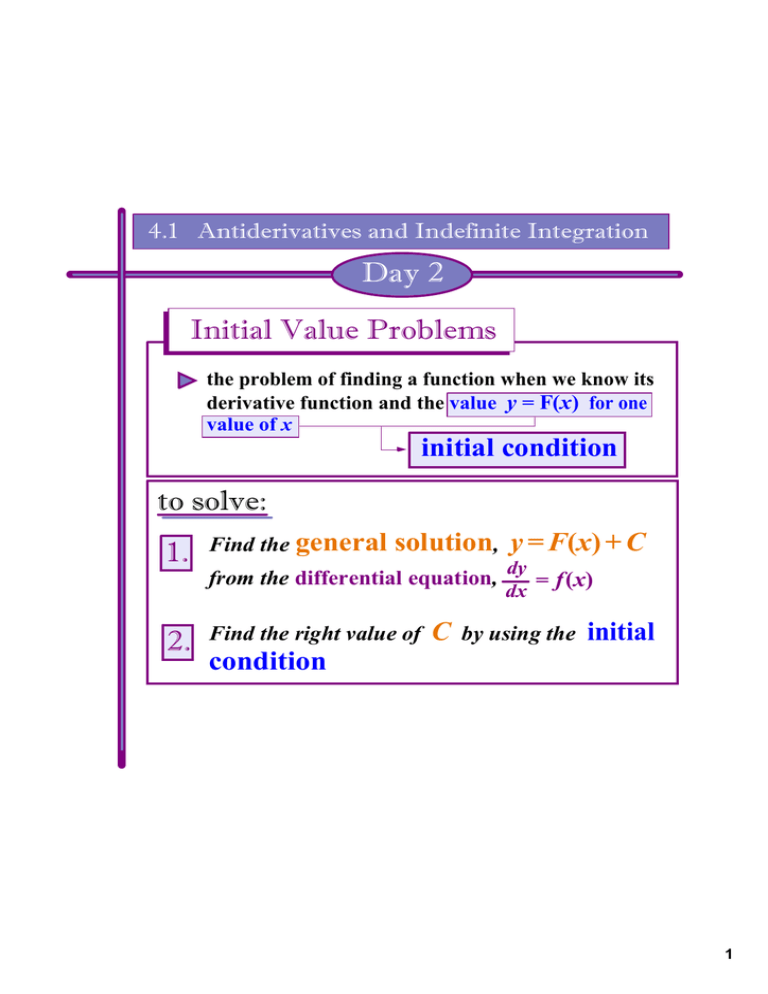Lesson 4.1 day 2
advertisement

4.1 Antiderivatives and Indefinite Integration Day 2 Initial Value Problems the problem of finding a function when we know its derivative function and the value y = F(x) for one value of x initial condition to solve: 1. Find the general solution, y = F(x) + C from the differential equation, 2. dy = f (x) dx Find the right value of C by using the initial condition 1 Example: Find the curve whose slope is 3x2 if the curve is required to pass through the point (1, ­1). differential equation: initial condition: ... curve: 2 (more) Examples: Slope Fields A2 4.1 Exercise 54 (page 250) [gray handout] (a) Sketch two approximate solutions . . . (b) Use integration to find the particular solution . . . differential equation: dy dx = x2 ­ 1 point: (­1, 3) 3 p250 #62. Solve the differential equation. f "(x) = sin x, f '(0) = 1, f (0) = 6 4 Applications [salmon handout] 1) (p 250 ­ Exercise #64) Population Growth The rate of growth dP/dt of a population of bacteria is proportional to the square root of t, where P is the population size and t is the time in days (0 t 10). That is dP dt =k t . The initial size of the population is 500. After 1 day the population has grown to 600. Estimate the population after 7 days. 5 recall: s(t) position function v(t) = s ' (t) velocity function a(t) = v ' (t) = s " (t) acceleration function note: a(t) acceleration function v(t) = a(t) dt velocity function s(t) = v(t) dt = a(t) dt position function 6 Applications [salmon handout] Solving a Vertical Motion Problem A ball is thrown upward with 2) (p 248 ­ Example 8) an initial velocity of 64 feet per second from an initial height of 80 feet. (See Figure 4.4). a.) Find the position function giving the height s as a function of the time t. b.) When does the ball hit the ground? 7 Assignment p250-252 #49 - 63 odd, #65 - 69, #71 - 75 8

